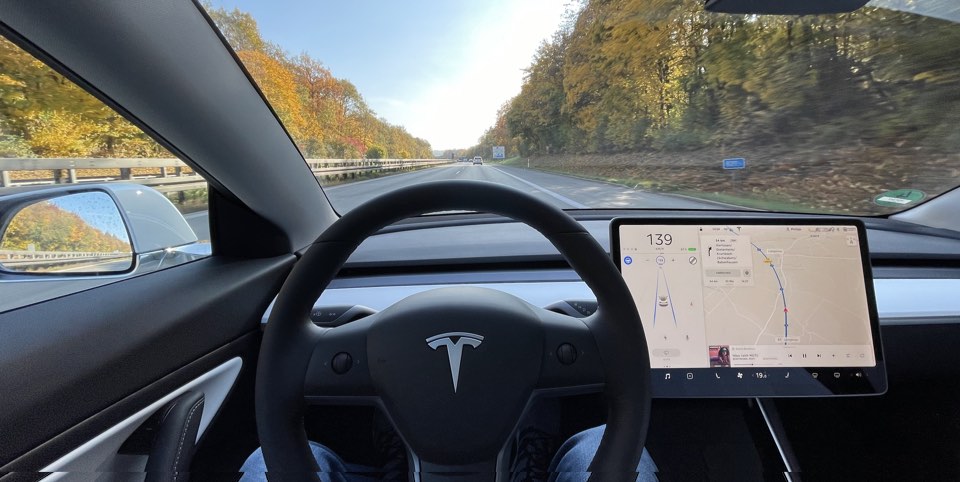Interiors of our cars are changing. More screens, more touch controls and less buttons with real tactical feedback around the driver. Software drives car innovation. Only the steering wheel is here to stay - at least for now.
People want pyhsical buttons?
My Tesla only has a single screen with a handful of buttons - nothing else. The upcomming models will be even more radical and remove turn indicators and gear selection and turn them into icons on the screen or steering wheel. Other manufacturers already follow, e.g. Volkswagen and the ID.3.

People often complain that they miss physical buttons that are easier to press while driving because you can remember position and feel feedback without looking. I think those benefits are true. Common used examples for this are the windshield whipers and climate controls.
But I think this misses the point and - at least from my first 10.000 kilometers driving a Tesla Model 3 - the Tesla functions are easier to use while driving. In comparison, while driving the moore recent version of MBUX, Mercedes infotainement system, with more buttons and two screens I always felt overwhelmed. Why?
Sensors killed the buttons, not screens.
Modern cars have automatic climate controls. They have rain sensors to detect rain and turn on the lights at night. Automatic gearboxes or electric motors don't need to inform me about RPMs.
Not the touchscreen killed those buttons but automation and intelligence from the car itself. And it might even get us rid of the steering wheel sometimes in the future.
I understand that there are cases when the sensors fail and maybe you want more fine-grained controls over the temperature. But those are the rare cases. You still can reach them with two taps in the same position on the screen or just use one of the new voice-assistants every manufacturer deploys and tell them to heat the drivers seat. All while driving safely (with your new lane assistant...). Remember the manual driving wheel from the movie iRobot(2004).
Finding better solutions
To further reduce the problem with touchscreens, car manufacturers have many more options - instead of complex and expensive physical buttons in many places.
- 🎯 Good UI that puts function always on the same spot so that a tap to e.g. always opens the climate controls without thinking.
- 👀 Hide detailed functions behind single buttons. For example, tapping the windshield wiper button clears the windshield and opens the UI to change the wipers speed in the Tesla.
- 👇 Reduce the need for buttons When I can see every information at a glance (e.g. map, speed, music) I don't need a button to switch e.g. to my navigation.
- 💬 Voice based Inputs Even better than buttons are voice-controlled features. Telling the car to navigate to the nearest parking space is easier than any on-screen or physical keyboard.
This is something Tesla does well while MBUX just removes buttons but doesn't deliver a good user experience in their UI.
Consider new usage models
While climate control is not a top priority for most drivers, other functions are. Setting a navigation target. Changing to the next song on your playlist. Muting the audio or just your microphone while in a team-call. Drivers are doing these kind of operations way more often - at least from my experience.
In a Tesla, most of these functions are reachable via buttons on the steering wheel. Accessible the whole time while driving, both hands on the steering wheel. In other cars you often need to be in a special UI mode or reach to an unlabeled touch input next to you.
This is the same reason I dislike Teslas new touch-sensitive buttons e.g. for driving mode selection and turn-indicators. We use them way too often while driving so that moving them to a touchscreen can become more of a problem.
As often with software, we need to measure and observe ourselves while driving. So let's keep the discussion on the real numbers and don't look back into the past too often.